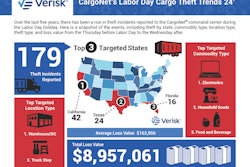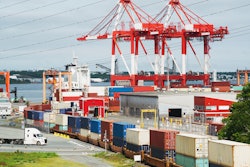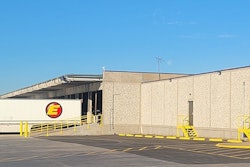Throughout 2024, one of the most discussed topics across industries has been “hidden fees." Both consumers and businesses are increasingly frustrated with the lack of transparency in pricing, pushing companies in various sectors to reconsider their fee structures. While businesses like hotels and rental car companies, have begun disclosing add-on charges to be more transparent, the prices we see advertised often don’t reflect what we actually end up paying – a challenge that’s particularly significant for companies managing heavy-duty transportation fleets.
These hidden fees pose a major challenge for companies that operate heavy-duty transportation fleets and their leasing structures, especially those locked into a “Full-Service Lease”. As these fees continue to grow, companies are becoming more aware of their impact on financial stability, and they are seeking alternative leasing options that offer greater transparency and cost efficiency.
While some argue that fees are necessary to cover operational costs and clarify where money is spent, the reality is that hidden fees, often referred to as secondary fees, can significantly affect how much consumers and businesses ultimately pay. According to the Consumer Financial Protection Bureau (CFPB), these fees not only inflate costs, but also hinder the ability of businesses to make informed financial decisions. CFPB data suggests that because these fees are hidden, companies often pay more than what would be expected if all costs were upfront and transparent.
The current white house administration has prioritized addressing hidden fees, commonly referred to as “junk fees,” estimating that Americans collectively pay over $90 billion annually in these charges. Legislative efforts are also gaining traction, with bills introduced to curtail excessive and unnecessary fees. States like New York, Illinois, and California have begun implementing regulations aimed at curbing these hidden fees across various industries, including restaurants and other service sectors.
The hidden cost of fees in fleet management
Although hidden fees have recently gained widespread attention, the issue has been brewing for years, particularly since the pandemic. The need for flexibility and agility became paramount in fleet management, making it crucial for companies to scrutinize every detail of their fleet’s vehicle lease structure. This close examination became a deciding factor in whether businesses could maintain profitability amid changing economic conditions.
During the pandemic, the ability to scale fleet size in response to fluctuating demand was essential. This flexibility required lease agreements that could adapt to changing needs, such as a Sale-Leaseback option.
However, hidden fees within Full-Service Leases have only compounded these challenges, highlighting the importance of transparency in fleet leasing.
Understanding full-service leasing
A Full-Service Lease is an agreement where the lessor bundles financing and various transportation services into a single monthly payment
While this might appear convenient it often results in a lack of flexibility for the lessee. These contracts typically lock businesses into long-term commitments with combined costs for maintenance, finance, and other administrative fees, making it difficult to adjust to changing operational needs.
The case for unbundled leasing
On the other hand, Unbundled Lease (UBL) agreements offer a more flexible alternative. These agreements break down costs individually, allowing companies to identify and control the lowest possible expenses associated with fleet management.
UBLs provide financing options based on actual costs, rather than estimates made at the beginning of the lease term. This approach also supports better vehicle life cycle management, optimizing both costs and performance. With a UBL, companies gain the freedom to scale their fleet size and upgrade vehicles as needed, ensuring that they only pay for what they use. This flexibility often translates into significant cost savings when compared to the rigid structure of a Full-Service Lease.
Calculating the savings with unbundled leasing
After accounting for lease payments, maintenance fees and warranties, a company could save significantly with a UBL. For instance, a fleet of 100 trucks might save $1.04 million in the first year alone by opting for an unbundled lease structure, with monthly costs averaging $2,054.00 per truck compared to $2,921.00 under a Full-Service Lease.
Maintenance and repair costs based on lease structure
One of the key differences between a UBL and FSL is how maintenance and repair (M&R) costs are calculated. Full-Service Leases often “front-load” these costs, meaning companies pay more upfront regardless of actual usage. In contrast, unbundled agreements allow companies to manage these costs more effectively, typically resulting in lower expenses over time.
For example, under a Full-Service Lease, a company might pay a fixed fee plus mileage charges from the start and in the early usage of the asset, without benefiting from manufacturer warranties or cost reductions over time. However, with a UBL, maintenance costs can be significantly lower, with companies only paying for the services they actually need. This can lead to additional savings, particularly in areas like tire replacement, where costs can add up quickly.
Beyond maintenance, other aspects of fleet management are also affected by hidden fees. Original equipment costs under Full-Service Leases are often higher, and additional administrative fees can vary based on location. Fuel costs can also become less transparent, with bundled services making it difficult to track true expenses.
For companies operating large transportation fleets, understanding and mitigating these hidden fees is crucial for maintaining a healthy bottom line. As the industry continues to evolve, organizations with transportation fleets must stay vigilant in managing their Total Cost of Ownership to ensure they are operating as efficiently as possible.














